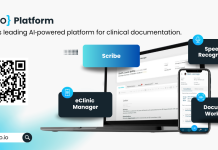20 years after it was first proposed, Ben Riley, Director of Aventius, explains why the NHS has struggled to implement a centralised IT system across its trusts
My previous article for Open Access Government considered the current state of digital transformation in the NHS and some issues with the strategy and implementation. In this article, I will examine what has previously been attempted and if there is anything we can learn and apply.
Something briefly mentioned in part one was a big push in the early 2000s to fully digitalise the NHS. This project was referred to as the National Programme for IT (NPfIT) and later rebranded as ‘Connecting for Health.’ Suffice to say, if you were in the NHS, you have likely heard of and experienced what this project was attempting to achieve.
In a nutshell, the project aimed to get the entire NHS onto a single computer system. However, that constraint was not entirely true as they decided to give some leeway to GPs with the GP System of Choice (GPSoC), which, as the name implies, gave GPs a chance to choose another system.
Billions were spent upgrading network infrastructure and commissioning contractors to create the new system, but the NHS is still not streamlined into a single computer system.
Why is the NHS not on a single computer system now?
The failure of the project was due to several factors, such as lack of consultation, ignoring recommendations from experts, and moving too fast; you will probably get a different answer from each person you ask. However, having worked in IT for the NHS at the time, it was mainly that the people at the highest level of the project had not understood the core details of how the organisation worked.
To give some background, they treated the NHS as one large organisation, which it is, and isn’t. The NHS is split into two parts, a commissioning arm and a provider arm, where it commissions its own providers (e.g., NHS hospital trusts) and private contractors (e.g., Bupa, Virgin and others) to provide the actual services.
For example, two hospital trusts in other areas of the country might have a district nurses service as part of their community services. Imagine one of the trusts wants a database or app to save their data for their district nurses; you would build the system and roll it out. Now, the other trust comes along with the same request for their district nurses, and you might expect the same system to be applied across both trusts. Unfortunately, this is not the case.
Different systems for the same service
During my time in the NHS, I encountered a similar situation. We had made one system for a particular trust, and then the same service at another trust wanted a system, and I logically (in hindsight, naively) assumed we could just use the same system as the same service.
What I had not understood at the time was that each organisation and each of the services those organisations provide often work differently; they need to record different information and report different things to their commissioners (apart from national returns, but this will be discussed later). This is where I created a second system for the same service in a different trust.
This small but important detail is, I believe, the main downfall of NPfIT. They failed to understand that it is not possible, even today, to get the whole of the NHS onto one computer system. Not for technical reasons but because every part of the NHS works differently. Unless there were some drastic changes in how the NHS works, there would effectively need to be a computer system for every different part of the whole organisation.
What can be learned from this?
The main takeaway is that the devil is in the details regarding the NHS, data and IT. Any digital transformation in the NHS at a level similar to NPfIT needs to understand how the NHS works intimately on several levels. Simply applying some standard project implementation plan will not work.
This is the crux of the problem: in order to support digital transformation in the most ideal way for both patients and staff, the NHS needs to change how it works – which is no easy task. One service at one trust must work identically to the same service in another trust, at least in the way that information recording is concerned.
There is no good reason that the same services in different trusts need different systems. This is, of course, easy to say, but as you would expect, the business change required would be considerable.
However, this is necessary in order to have a completely digital NHS that is both efficient and can provide what is required at multiple levels to multiple audiences, including patients and, importantly, staff. It might be hard to hear, but it will not be possible if we have a complex system of smaller systems talking to each other, as is the current strategy.
While this might be able to get some appointments appearing on an app for an individual patient, it will become very difficult to manage, maintain and adapt. That kind of system does not lend itself to large-scale data analysis, and in the NHS, where its data is spread about, this should be a prime aim of any digital transformation project.
In the next part, we will look at where the current digital transformation in the NHS is heading.

This work is licensed under Creative Commons Attribution-NonCommercial-NoDerivatives 4.0 International.











